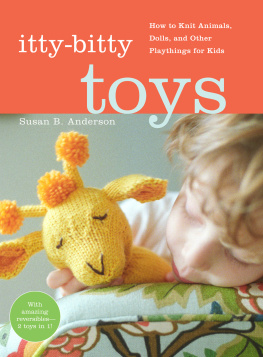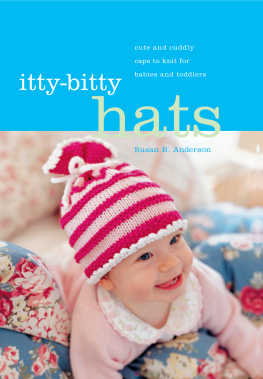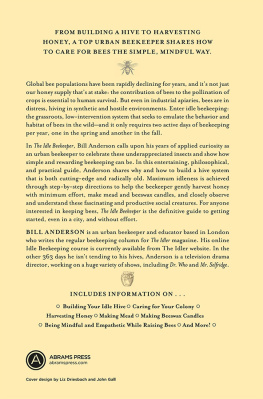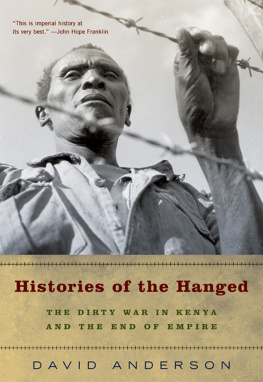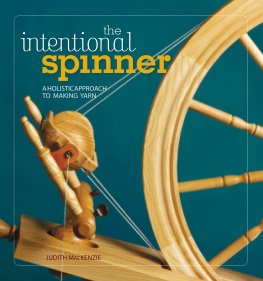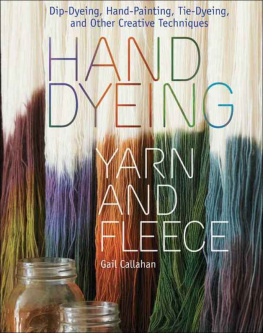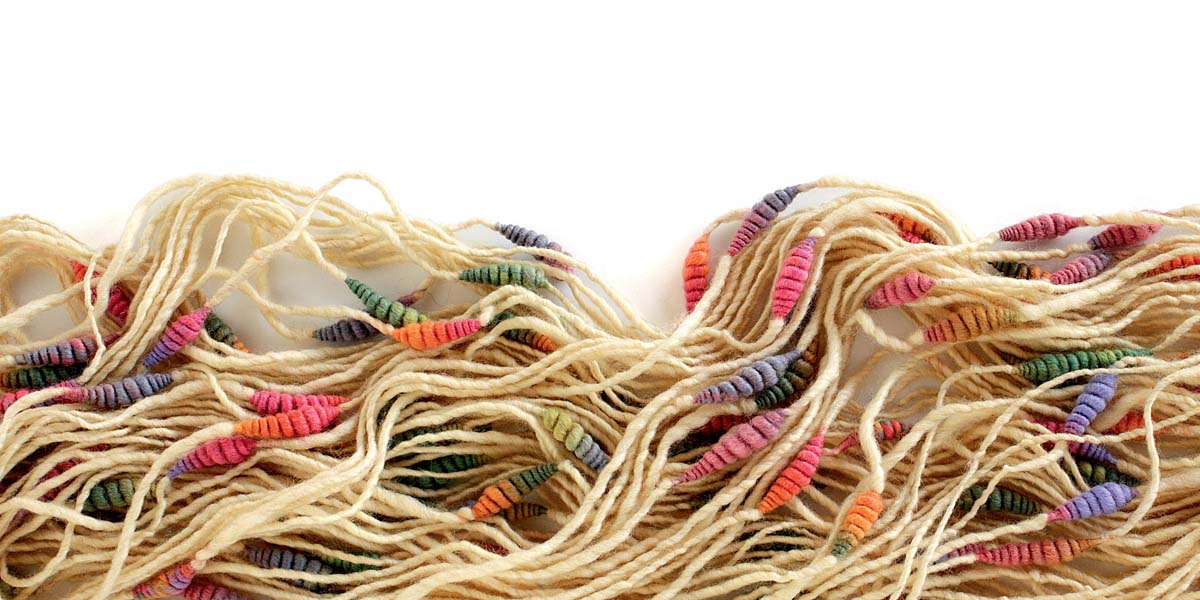The mission of Storey Publishing is to serve our customers by publishing practical information that encourages personal independence in harmony with the environment.
Edited by Gwen Steege
Art direction and book design by Jessica Armstrong
Cover and yarn card photography by John Polak, except for authors photograph by Linda Gail Conti
Interior photography credits appear on page 255
Indexed by Catherine Goddard
2012 by Sarah B. Anderson
Ebook design and production by Dan O. Williams
Ebook version 1.0
June 7, 2013
All rights reserved. No part of this book may be reproduced without written permission from the publisher, except by a reviewer who may quote brief passages or reproduce illustrations in a review with appropriate credits; nor may any part of this book be reproduced, stored in a retrieval system, or transmitted in any form or by any means electronic, mechanical, photocopying, recording, or other without written permission from the publisher.
The information in this book is true and complete to the best of our knowledge. All recommendations are made without guarantee on the part of the author or Storey Publishing. The author and publisher disclaim any liability in connection with the use of this information.
Storey books are available for special premium and promotional uses and for customized editions. For further information, please call 1-800-793-9396.
Storey Publishing
210 MASS MoCA Way
North Adams, MA 01247
www.storey.com
To my parents, Karen and Norris Johnson, who nurtured seven children with love, respect, and creativity: I owe so much to you
&
To Dick, my husband, patient supporter, and best friend
Contents
Foreword
We humans have been spinning for thousands of years. Many thousands, actually. More than twenty thousand by the last count. We spun to get out of the cave, to feed ourselves, to clothe ourselves, and to make the wide, wide world our home.
Making thread is primal; we did it before we formed clay, before we worked metal long, long before we made glass. You would think, in all these thousands upon thousands of years, that everything that could be done to create beautiful, useful thread would have been done, that there could not be one new thing. After all, how many ways can there possibly be to shape fiber into yarn?
But if there is one thing I do know after a lifetime of loving thread and fiber, it is that the field of textiles is constantly expanding. And, it is in our century, the last hundred years or so, that an explosion of new spinning techniques has occurred, creating hundreds of yarn types that have never existed before. Designers have grouped these new yarns together and called them novelty yarns. They reflect a major change in how we create yarns; they are our centurys gift to the world of textiles.
Sarah brings to this new world of yarn design two important things: a bright curiosity and an innate love of beauty and order. Sarah is the consummate spinner. What she does best is to always ask, what will happen if? Then, she pays attention.
Her wonderful collection of yarn samples and what they do is, as she says, a yarn library. But it is also a road map to a new textile territory and a travelers companion that points out many interesting spots to visit. Best yet, it is a lexicon so that we can share a common language as we meet along the way.
Enjoy the journey!
Judith MacKenzie
INTRODUCTION
Endlessly Fascinating Fiber
Fiber and the arts that use fiber have held a lifelong fascination for me. My favorite things about yarn and the making of yarn are the endless variations and possibilities. For the past few years, Ive been collecting ideas for different yarn constructions and spinning skeins that represent some of these variations. These skeins have become my personal yarn library. This collection goes with me to workshops and classes to be used as examples not only of what we are learning in the class but also as examples of what can be done beyond plying two strands together.
Because my focus is on the construction of the yarn, I made the samples all in white (or mostly white). Color is a whole separate, fantastic subject, but because here Im focusing on construction, I feel color can be a distraction. As the library grew (there are now more than 70 examples), I was pleased to see spinners reactions to the white smorgasbord of skeins. One comment that stands out in my mind is from a spinner who said, When I see all of these yarns youve made, it makes me believe that I can do it, too. That, my friends, is what this book is all about. Its meant to give spinners inspiration and a sense of what is possible with wool and wheel. It is my contribution to the growing pool of spinning books and videos now available. We are in an age rich with information, and because creativity breeds more creativity, I look forward to the coming years.
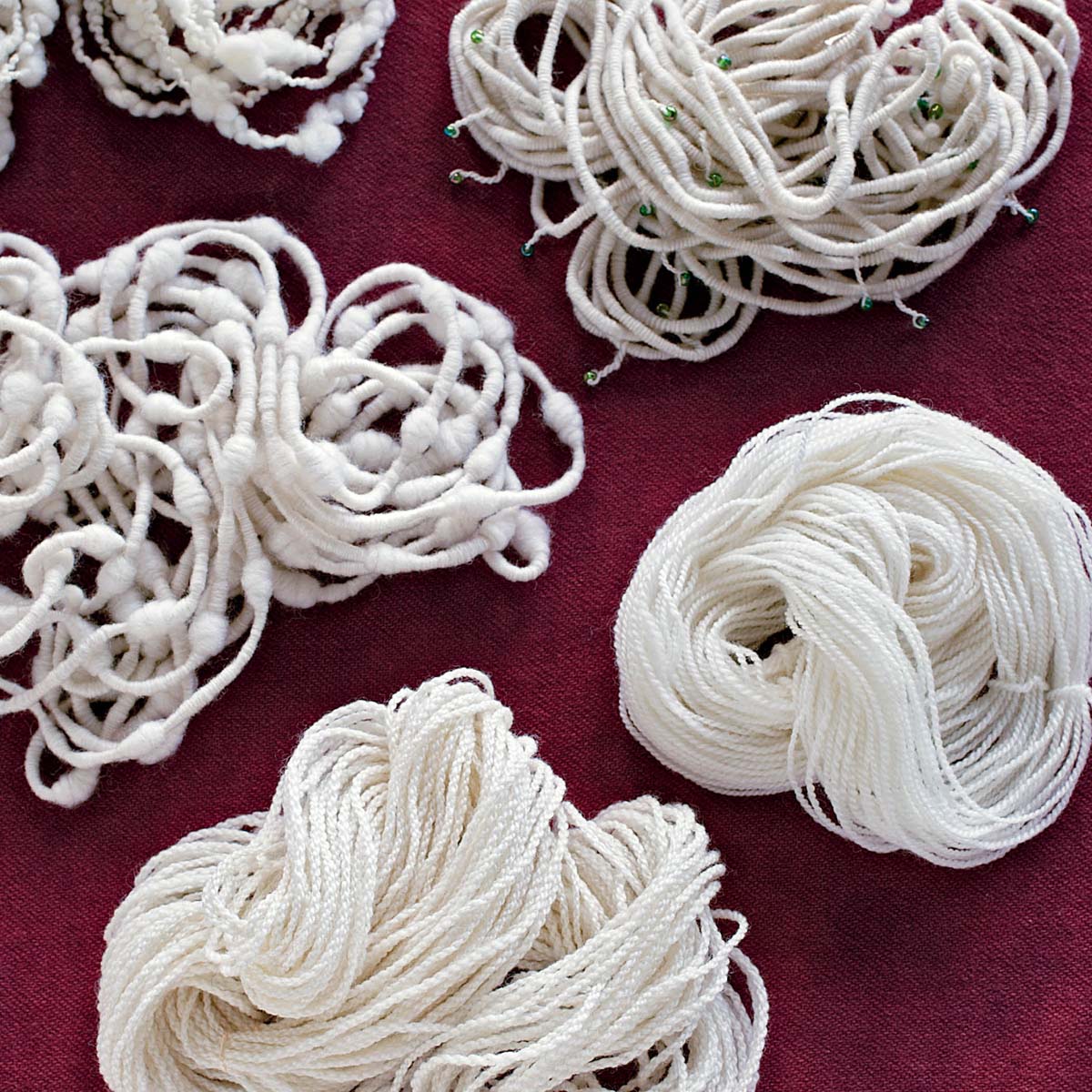
From bread-and-butter yarns to exotic designer dessert yarns, learning new spinning techniques will not only challenge you and make you a better spinner, but it will be lots of fun as well.
From Bread and Butter to Cake
Most of the yarns I use every day in projects are simple 1-, 2-, or 3-ply constructions. These are bread-and-butter yarns. I would never be without them, but sometimes its fun to make something different or unusual. Designer yarns are like dessert, and as you take the time to learn the new techniques required to make them, your skill levels grow, improving every yarn you create thereafter, from the simple singles to the most ambitious novelty.
This book isnt meant to teach you how to spin. It is for spinners who want to learn more about spinning and try something different. It is not the definitive word on the subjects it covers, but its my experience and opinion in book form. It is meant to be a resource for you to draw from as you grow in proficiency. The methods I use arent the only or right way. As a mostly self-taught spinner, I didnt have teachers to show me the right way to do things. That said, you may find that I do some things differently from how you previously have been taught. Just look at any technique as a choice. Consider why you do things the way you do and then find the way that works for you and produces the result you want.
No one is, of course, truly self-taught. Every time I am exposed to what other spinners are doing I learn from them. Just watching how someone uses their hands as they draft out the fiber or seeing an exciting new project inspires and primes my creative pump. In actuality, I have had hundreds of teachers and continue learning every time I teach a class, gather with spinners, read a spinning book, or see other spinners work. The community of spinners has to be one of the warmest and most generous groups of people I have ever been involved with. The art-yarn movement is pretty exciting, too. Many of the techniques are challenging and stretch the spinners coordination while also stretching his or her imagination. Even if you never plan to use these yarns, I encourage you to be open to trying to make them. It is great mental and creative exercise and most certainly makes you a better spinner. Even the most conservative spinner may have dreams infiltrated with beehives, coils, and knots. A few of these little elements can be used to make your project uniquely yours they dont have to dominate a finished piece. They can be that one sassy little detail that turns your project from plain to unforgettable (in a good way).



